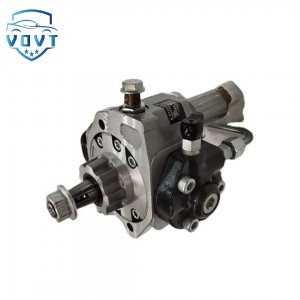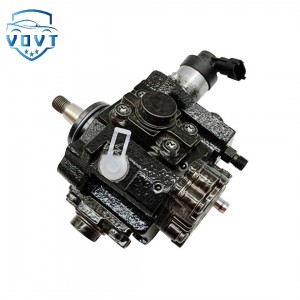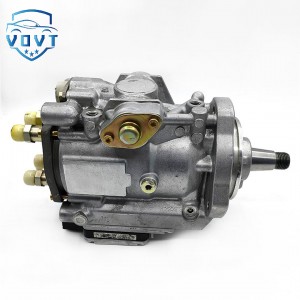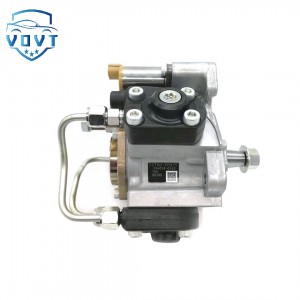Diesel Fuel Injection Pump 4PL1174A Engine Auto Engine Part
products description
| Reference Code | 4PL1174A |
| MOQ | 1 PCS |
| Certification | ISO9001 |
| Place of Origin | China |
| Packaging | Neutral packing |
| Quality Control | 100% tested before shipment |
| Lead time | 7~15 working days |
| Payment | T/T, Western Union, Money Gram, Paypal, Alipay, Wechat |
Introduction of oil pump
The oil pump is a core component that converts mechanical energy into hydraulic energy to achieve fuel delivery and pressure establishment. It is widely used in engines, hydraulic systems and industrial equipment. Its working principle is based on volume change, compressing fuel through mechanical movement. It can be divided into the following categories according to structure and purpose:
Classification and characteristics by working principle
1. Gear pump
Structure: It consists of a driving gear, a driven gear and a pump body, and forms a sealed volume through the meshing gap.
Working logic: Fuel is sucked in when the gear rotates, and pressure (up to 3MPa) is generated by squeezing the fuel when meshing. The output flow is uniform but the pulsation is large.
Application scenarios: Automobile fuel tank fuel pump (such as Volkswagen EA211 engine fuel pump), hydraulic system low-pressure circuit.
2. Plunger pump
Core components: plunger, cylinder body, oil distribution plate, and the volume is changed by the reciprocating motion of the plunger in the cylinder hole.
Technical advantages:
High-pressure output (up to 400MPa), suitable for diesel engine common rail system (such as Bosch CR high-pressure oil pump);
Variable design (swash plate/swash axis adjustment displacement), adaptable to working conditions (such as excavator hydraulic oil pump).
3. Vane pump
Structural features: The rotor has blades, and when rotating, the blades are close to the pump body under the action of centrifugal force to form a sealed cavity.
Performance: Stable output flow, low noise (≤60dB), but low upper pressure limit (usually ≤20MPa), commonly used in machine tool lubrication systems.
Analysis of typical application scenarios
1. Automobile engine fuel pump
Low-pressure fuel pump (inside the fuel tank):
Electric drive (permanent magnet motor), flow rate 30-100L/h, pressure 0.3-0.5MPa, providing pre-pressure for the high-pressure oil pump;
Integrated filter, pressure regulator and fuel level sensor (such as Toyota Corolla fuel pump assembly).
High-pressure fuel pump (direct injection):
Mechanically driven (driven by the camshaft), the reciprocating motion of the plunger pressurizes the fuel to 5-35MPa;
The high-pressure oil pump of the Volkswagen EA888 engine adopts a three-plunger design, with a peak flow of 200mL/stroke and supports multiple injections.
2. Diesel engine common rail system oil pump
Technical core:
The Bosch CP4 oil pump adopts a radial piston structure, with a speed of 3000-6000rpm and an output pressure of 200MPa+;
Integrated pressure sensor (accuracy ±1%) and pressure limiting valve to prevent overpressure damage to the common rail pipe.
3. Hydraulic system power source
Engineering machinery scenario:
The main oil pump of the excavator is mostly a variable piston pump with a displacement of 50-300mL/r, driving the bucket, walking and other actuators;
Constant power control (P-Q curve adjustment) to avoid engine overload (such as Caterpillar 320D hydraulic oil pump).
Key performance parameters
Parameter Meaning Typical range
Rated pressure Continuous working pressure Gear pump 0.5-3MPa, plunger pump 10-400MPa
Displacement Output fuel volume per revolution 0.1-500mL/r
Volumetric efficiency Actual flow / theoretical flow Gear pump ≥80%, plunger pump ≥90%
Speed range Safe working speed range Electric oil pump 3000-8000rpm
4. Technology development trend
Electrification: New energy vehicles promote the application of brushless DC oil pump (BLDC), and the efficiency is increased to 90% (such as Tesla Model 3 oil-cooled motor oil pump);
Intelligence: Integrate sensors and ECU to realize on-demand oil supply (such as Bosch iBooster electro-hydraulic brake oil pump);
High pressure: Diesel engine oil pump develops to 300MPa +, in line with the national VII emission requirements (such as Cummins XPI oil pump research and development direction).
From automotive fuel supply to industrial hydraulic drive, the technological evolution of oil pumps has always revolved around "efficiency - pressure - control accuracy". Its reliability directly affects system performance. For example, a 0.01mm wear on the plunger of a diesel engine oil pump may cause the fuel pressure to fluctuate by more than 10%. This shows that precision manufacturing and material science (such as hard chrome plating on the plunger and ductile iron for the pump body) are its core competitiveness.

























